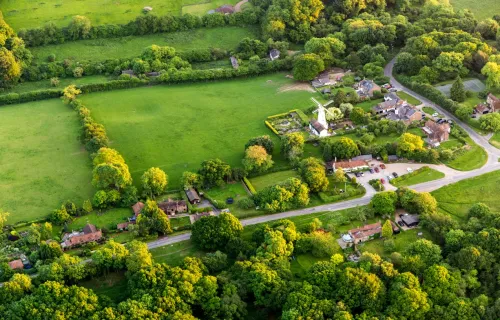The UK’s 5G vision is dreaming big, seeking to reach 100 per cent of the population by covering the entire country with full fibre connectivity — or technologies that can match full fibre capabilities.
Achieving universal 5G coverage will be a Herculean task, and one that’s going to need concerted effort from providers, regulators and government alike. Ofcom is currently planning to adopt a “light touch” intervention method of market stimulation, with regulation used only when intervention is required to remove impasses or stimulate the market. Looking at the challenges of making universal 5G a reality, I believe we’re going to need to be creative in our approach, going beyond that “light touch”.
We need to push beyond Ofcom’s current plans to primarily promote investment and competition, and to use timely public interventions only where there is no commercial case to build networks.
Delivering rural 5G coverage is a hurdle
Delivering universal 5G to urban areas through market competition shouldn’t present a problem.
Suburban areas, too, should be relatively straightforward because it’s likely a fibre provider will be able to put together a business case for selling wholesale fibre access. Rural environments though, may prove to be a different matter, since there’s no feasible business case that justifies complete fibre coverage.
You only need to glance at the 5G use cases to understand why it’s essential that rural areas are included. Any form of connected agriculture will require fibre to run out to the fields to support automated activity such as ploughing, sowing or harvesting. Fitting livestock with IoT sensors to track their location and monitor when they’re about to give birth or placing sensors in fields to understand crop growth will also need full rural coverage. Then there are use cases such as connected emergency services that will need all-area support: connected ambulances, for example, will rely on seamless connectivity to carry out advanced diagnostics en route.
Maximise the use of existing assets
Let’s start by making the most of the assets we already have that currently carry fibre or are capable of carrying fibre. Ofcom is planning to introduce unrestricted access to Openreach’s underground ducts and overground poles, but why stop there? So many other organisations have similar assets that could help 5G take a significant step forward. Railtrack owns a lot of track-side fibre and Highways England has fibre running alongside motorways. National Grid has a thriving fibre network along its powerlines, and energy, phone and broadband supplier SSE alone has an estimated 14,000km of fibre. Local authorities, too, have infrastructure that could be helpful to a 5G network. Bournemouth, for example, has fibre running through its sewers.
There’s a desire to create a nation-wide virtual model of the infrastructure available to support communications across the UK, so why not use this initiative as the stimulus to create a national communications asset register? This could list all the fibre already laid, as well as the ducts, poles and other assets that are either carrying fibre or could carry fibre.
Make neutral hosting companies viable
To develop 5G we’re going to have to bring together business, industry and local government as stakeholders, sharing the costs as well as the benefits. It’s planned that regional consortia focused around asset owners and potential service providers will act as neutral hosting companies, providing connectivity as a service. However, if this is to work, a couple of things will need to be addressed.
Firstly, it’ll be vital to keep the costs down by running fibre along existing infrastructure wherever possible. This will mean bringing in organisations that own assets capable of carrying fibre, such as the service pipes and ducts under local government control. Secondly, we’ll have to make neutral hosting companies attractive to investors by opening the market up to non-traditional players. We need to find those looking for a less intensive return on investment to make them viable, such as an investment bank, willing to lend over twenty years or so. I’m picturing a model where consortia would invest in the fibre, routers and cell towers, and then a telecoms operator would connect to the infrastructure, putting their frequency on top of it.
Consider all the possibilities
To achieve universal 5G coverage we’re going to have to think beyond a competition-driven fibre network. Delivering rural coverage will need targeted interventions, such as making access mandatory to existing fibre assets. Plus, we’ll have to explore the possibilities of hybrid connectivity models for areas where fibre will never be a viable option. Supporting alternative technologies, such as satellite communications, may well be the most appropriate and cost-effective interim way of delivering connectivity in remote areas. After all, with the proliferation of satellites, the cost of use may well come down over time, completely removing the need to lay fibre.
The government’s target of achieving 100 per cent fibre coverage by 2033 is a stretching one, but the sooner we get there the faster UK plc will be able to become a 5G nation, leaping ahead of other markets, and leading the 5G world. It’s vital we act now to accelerate this process so that all citizens can benefit.




